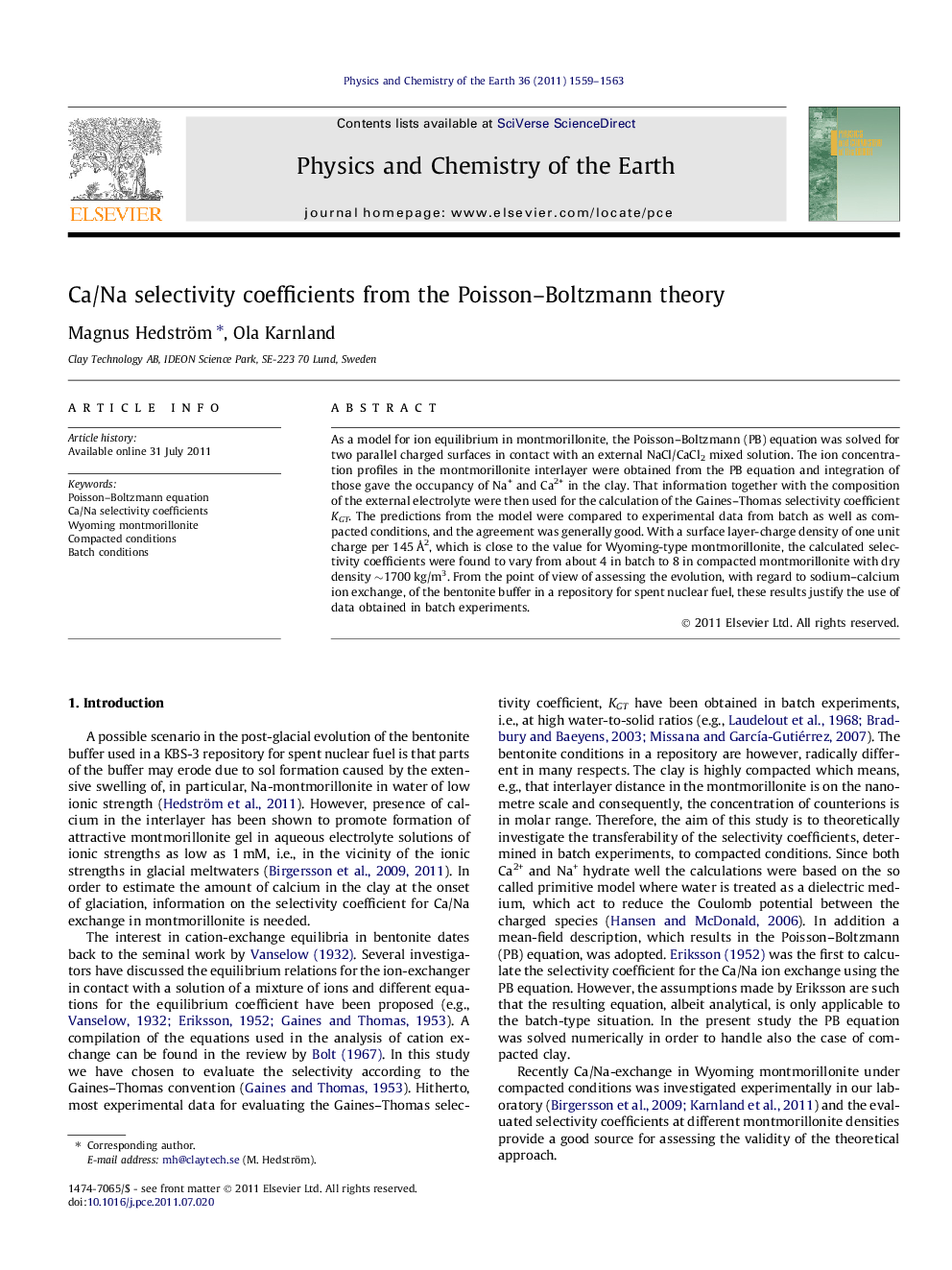| Article ID | Journal | Published Year | Pages | File Type |
|---|---|---|---|---|
| 4721233 | Physics and Chemistry of the Earth, Parts A/B/C | 2011 | 5 Pages |
As a model for ion equilibrium in montmorillonite, the Poisson–Boltzmann (PB) equation was solved for two parallel charged surfaces in contact with an external NaCl/CaCl2 mixed solution. The ion concentration profiles in the montmorillonite interlayer were obtained from the PB equation and integration of those gave the occupancy of Na+ and Ca2+ in the clay. That information together with the composition of the external electrolyte were then used for the calculation of the Gaines–Thomas selectivity coefficient KGT. The predictions from the model were compared to experimental data from batch as well as compacted conditions, and the agreement was generally good. With a surface layer-charge density of one unit charge per 145 Å2, which is close to the value for Wyoming-type montmorillonite, the calculated selectivity coefficients were found to vary from about 4 in batch to 8 in compacted montmorillonite with dry density ∼1700 kg/m3. From the point of view of assessing the evolution, with regard to sodium–calcium ion exchange, of the bentonite buffer in a repository for spent nuclear fuel, these results justify the use of data obtained in batch experiments.
► Poisson–Boltzmann theory for calcium/sodium exchange in montmorillonite. ► Gaines–Thomas Ca/Na-selectivity coefficients increase with increasing dry density. ► The selectivity coefficients vary from 3.6 in batch to 8 at high compaction. ► External electrolyte composition has marginal effect on the selectivity coefficient.
